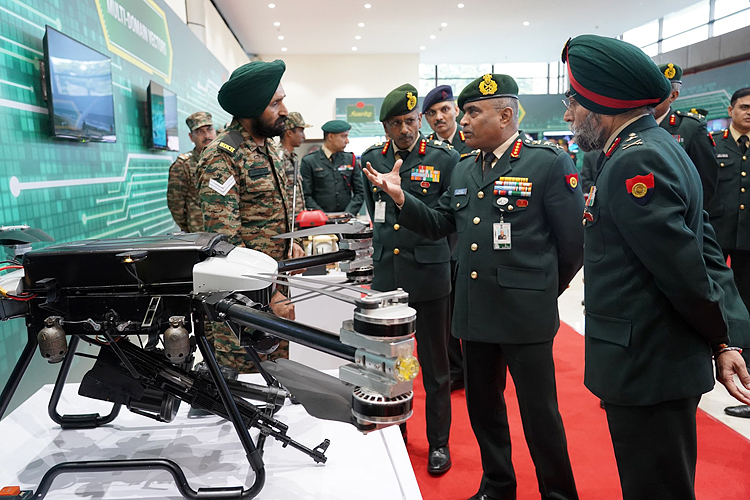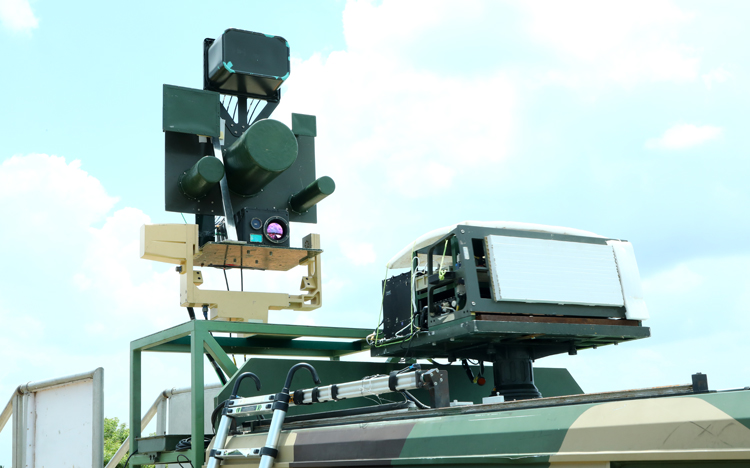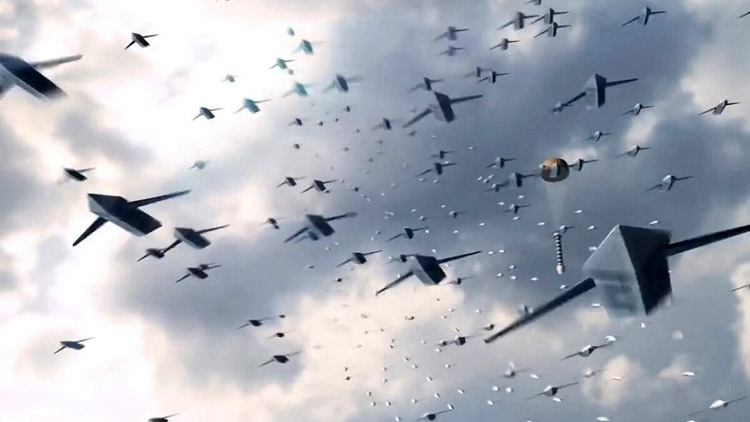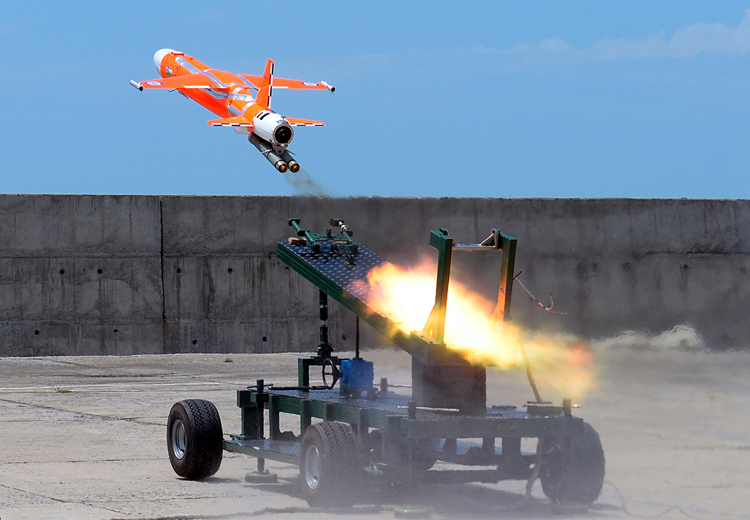INDIAN ARMED FORCES CHIEFS ON OUR RELENTLESS AND FOCUSED PUBLISHING EFFORTS

The insightful articles, inspiring narrations and analytical perspectives presented by the Editorial Team, establish an alluring connect with the reader. My compliments and best wishes to SP Guide Publications.

"Over the past 60 years, the growth of SP Guide Publications has mirrored the rising stature of Indian Navy. Its well-researched and informative magazines on Defence and Aerospace sector have served to shape an educated opinion of our military personnel, policy makers and the public alike. I wish SP's Publication team continued success, fair winds and following seas in all future endeavour!"

Since, its inception in 1964, SP Guide Publications has consistently demonstrated commitment to high-quality journalism in the aerospace and defence sectors, earning a well-deserved reputation as Asia's largest media house in this domain. I wish SP Guide Publications continued success in its pursuit of excellence.
More Military Innovations
Indian Military unleashes cutting-edge technology in its journey towards self-sufficiency and strategic advancements
 |
The Author is Former Director General of Information Systems and A Special Forces Veteran, Indian Army |

In 2023, the top 15 technology trends, like AI and ML, IoT, VR and AR, Robotics and Automation, and 3D printing, were expected to have significant impact on various industries and daily life since these technologies have the potential to revolutionise the way we work, communicate, and interact. With the rise of India, our defence industry, including the private industry and startups are focused on optimising military technologies like: artificial intelligence; robotics and autonomous systems; advanced defence equipment; internet of military things (IoMT); cyber warfare; big data and analytics; 5G connectivity; immersive technologies, and; blockchain.
The Army, Navy and the Air Force have initiated critical projects under their modernisation plans to the Indian industry including defence startups for development of indigenously developed capabilities into the Armed Forces. Concurrently innovations are also coming up and being encouraged within the services. Some of these innovations have been covered in these columns periodically.
The Indian Army is observing 2024 as the year of 'Technology Absorption,' focusing on innovative projects like an integrated anti-drone system against enemy swarm attacks
For example, it was mentioned recently that the Indian Navy has developed an anti-swarm drone 30mm ammunition (used by the AK-630 close-in weapon system) capable of building an iron wall around its warships and assets for protection against enemy swarm drones. It was also mentioned that the Indian Army has unveiled an in-house innovative Multipurpose Octocopter, equipped with high resolution cameras for conducting surveillance missions to provide real-time video feeds of live situational awareness to assist decision making, whose platform can mount assault rifles and grenades, and which can also supply essential supplies to forward posts in high altitude having a payload capacity of 25 kg.

News report of December 10, 2023 intimated that the India Army is testing the prototype of an AI-enabled scope for guns which can detect humans up to 300 metres; a boon for border and close combat operations. The indigenously developed scope can be fitted on any small weapon turning it into a 'smart' weapon with 80-90 per cent accuracy. It uses an AI algorithm and sensory data to inform the shooter when to fire and is capable of turning a soldier into a marksman. Presently the prototype has only day firing capability, with a 50mm lens and 30 X zoom, but can be turned into a nightfiring device also.
The ongoing war in Ukraine has highlighted extensive use of stealthy swarm drones, emphasising the need for a hybrid anti-drone weapon system with both kinetic and non-kinetic capabilities
The Indian Army is observing 2024 as the year of "Technology Absorption". Recent media reports of January 12, 2024 have indicated that the Indian Army has developed an integrated anti-drone system against enemy swarm attacks, which includes an indigenous jammer integrated with an upgraded Russian-origin Schilka Air Defence Weapon System. The ongoing war in Ukraine has highlighted extensive use of stealthy swarm drones and the best defence against such threats is a hybrid anti-drone weapon system that has both kinetic and non-kinetic capability. The Indian Army has begun deploying this integrated anti-drone system that took 8-10 months to develop.

Drones, unmanned combat aerial vehicles (UCAVs) and Counter Unmanned Aerial Systems (CUAS) have made the battle-space a dense environment. At the same time, it is pertinent to note that military-grade projects require a high degree of innovation and technological advancement for a successful prototype which can withstand the rigours and standards of military needs.
As India aims to achieve and maintain the edge as a technological powerhouse, there is a crucial need for increased investments in research and development (R&D) to power indigenisation
However, as India and the Indian Military are aiming to achieve and maintain the edge as a technological powerhouse, much more is required to be done by way of investments in research and development (R&D) to power indigenisation. For example, Chinese drones are being used globally because of low costs, ease of flying and stability. Our drone industry is mostly dependent on the Chinese market for all major critical parts. We don't invest in R&D, which is a major Chinese strength. Most of the government departments and private players don't object to the use of Chinese drones.

China has developed the world's first miniaturised atomic energy system using 63 nuclear isotopes packed into a module smaller than a coin, which can power smartphones for 50 years without the need for charging. Don't we have the best brains? Isn't this one example of lack of focus and investments in R&D, given that this concept had already been explored in the 20th century and Betavolt has successfully realised it in their innovative product?
The US has capped the production of GE F404-IN20 engines, potentially limiting India's annual production capacity of the Tejas Mk1A, highlighting the importance of self-sufficiency in defence innovation

Finally, any amount of emphasis on 'holistic' indigenisation would be less. We need to put in much more by way of R&D and innovations to achieve self-sufficiency, mere slogans of Atmanirbhar in Defence will not suffice. This is signaled by America, which projects itself to be supporting us in conflicts and wants to take control of our defence sector, never losing an opportunity to twist the knife in India's back. In its latest backstabbing spree, the US has capped the production of GE F404-IN20 engines to 20 units per year. This means the US wants to cap annual production of India's Tejas Mk1A to 20, while India has ramped up the annual production capacity of the Tejas Mk1A to 24 and is likely to increase it further.





